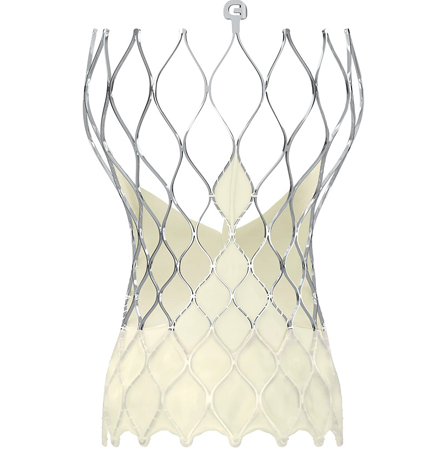Surgeon Q&A: Scar Tissue and Minimally Invasive Heart Valve Reoperations
Written By: Allison DeMajistre, BSN, RN, CCRN
Medical Expert: Patrick McCarthy, MD, Executive Director, Bluhm Cardiovascular Institute, Northwestern Medicine, Chicago, Illinois
Reviewed By: Adam Pick, Patient Advocate, Author & Website Founder
Published: August 18, 2025
With advances in heart valve surgery techniques and longer life expectancies, some patients with one open-heart procedure may require a second or even third reoperation. For example, children with congenital heart valve disease may need several surgeries into adulthood. Additionally, some adults with a tissue or mechanical valve replacement may require a re-replacement due to leaflet failure or infection. Regardless of the situation, the presence of scar tissue during a reoperation can make the procedure complicated.
We received a great patient question about scar tissue and reoperations from Lynn, who asked, “If a person has had two open-heart surgeries to replace the aortic valve and has significant scar tissue, can they have a third, less invasive replacement surgery?”
To answer Lynn’s question, we met with Dr. Patrick McCarthy, the Executive Director of the Bluhm Cardiovascular Institute at Northwestern Medicine in Chicago. Having performed over 10,000 cardiac surgeries, Dr. McCarthy has extensive background with reoperative patients. He is also a celebrated surgeon among the HeartValveSurgery.com community, with over 200 patient recommendations.
Facts About Scar Tissue and Minimally Invasive Heart Valve Reoperations
Here are the key insights shared by Dr. McCarthy:
- Scar tissue complicates reoperations. “It’s a tricky problem when patients form scar tissue. It slows down the operation,” said Dr. McCarthy. “We have to be really careful because we can’t see exactly where the ‘plane’ is. We call it the difference between scar tissue and the aortic wall or parts of the heart. So, we have to slow down.”
- Less invasive options may be possible for patients needing a reoperation. Dr. McCarthy said, “You can certainly do less invasive, as in transcatheter aortic valve replacement (TAVR). In many of those patients, the preferred option may be to avoid another open-heart operation. We can sometimes do the less invasive small incision with another open-heart operation. But again, it needs to be a very careful, controlled procedure. So, it can be done in some situations but isn’t done all that often.”
 Transcatheter Aortic Valve Replacement (Medtronic)
Transcatheter Aortic Valve Replacement (Medtronic)
- How does the scar tissue slow down the surgery? “The scar tissue makes it difficult because it’s like you put glue in there, and things get stuck together that aren’t normally stuck together,” explained Dr. McCarthy. “As you know, we need to have them separated as we’re doing the surgery, and so we have to slow down and then we have to use an electrocautery or scissors to separate things and put them back to the way they’re supposed to be. That adds time and can also add to the risks for bleeding. So, the second, third, fourth, fifth operations can be trickier, slower, and higher risk for bleeding.”
- Patients should find a surgeon who specializes in reoperation techniques. “There are surgeons that do a lot of these types of operations,” said Dr. McCarthy. “This is our routine at Northwestern and many of the big programs. But others may not see it all that often and many times will refer the patient out.”
Thanks Dr. McCarthy and the Northwestern Medicine!
On behalf of all the patients in our community, many thanks to Dr. Patrick McCarthy for sharing his clinical experience and research with us. And, a special thanks to Northwestern Medicine for taking such great care of heart surgery patients.
Related links:
- Surgeon Spotlight: Dr. Patrick McCarthy
- Dr. Patrick McCarthy Gets His 200th Patient Review at HeartValveSurgery.com
- Dr. McCarthy Q&A: Why is Mitral Annular Calcification Difficult to Treat?
Keep on tickin,
Adam
P.S. For the deaf and hard-of-hearing members of our patient community, we have provided a written transcript of our interview with Dr. McCarthy below.
Video Transcript:
Adam Pick: Hi, everybody. It’s Adam with HeartValveSurgery.com. And we’re in Los Angeles, California at the Society of Thoracic Surgeons Conference.
I am thrilled to be joined by Dr. Patrick McCarthy, who is the Executive Director of the Bluhm Cardiovascular Institute at Northwestern Medicine in Chicago, Illinois. Dr. McCarthy, it is as always great to see you again.
We’ve known each other for 15 years. You are one of the most beloved surgeons in our community with over 200 patient recommendations. It is great to see you here at STS.
Dr. Patrick McCarthy: Thanks for having me, Adam.
Adam Pick: While there’s all these great research presentations and data being shared among the physicians here at STS, we are getting patient questions coming at us from all over the world.
And this one, given your background and your skill with reoperative patients, would be really helpful for Lynn. And she asks, “If a person has had two open heart surgeries to replace the aortic valve and has significant scar tissue, can they have the less invasive third replacement surgery?”
Dr. Patrick McCarthy: So, it’s a really good question and it’s a kind of a tricky problem when patients form scar tissue, it slows down the operation.
We have to be really careful because we can’t, see exactly where the plane is. We call it the difference between scar tissue and like the aortic wall or parts of the heart. So, we have to slow down. You can certainly do less invasive as in TAVR, the transcatheter treatment, and in many of those patients, in fact, that might be the preferred option would be to avoid another open heart operation.
You can sometimes do the less invasive small incision and do the open heart operation with it, but again, it needs to be a very kind of careful, controlled procedure to do that. So, can be done, isn’t done all that often. But can be done in some situations.
Adam Pick: Very helpful, Dr. McCarty. Quick follow up. I’m sure patients might be wondering, when you say that scar tissue slows you down, what specifically, in terms of time and what you’re doing as you are being slowed down?
Dr. Patrick McCarthy: Well, the scar tissue makes it difficult because it’s like you put glue in there, and so things get stuck together that aren’t normally stuck together.
And you know, we need to have them separated as we’re doing the surgery, and so we have to slow down and then we have to use an electrocautery or scissors or something to separate things to put them back to the way that they’re supposed to be. That’s what adds time. And that also can add to the risk for bleeding.
So, second, third, fourth, fifth operations can be trickier, slower, and higher risk for bleeding.
Adam Pick: Which is a suggestion to anybody out there to make sure you find a specialist for reoperation techniques. Is that correct?
Dr. Patrick McCarthy: Correct. Yeah, so there are surgeons that do a lot of these type of operations. This is our routine at Northwestern and many of the big programs. But others just may not see it all that often. And so, oftentimes, they will actually refer the patient out.
Adam Pick: Great. Well, Lynn, I hope that helped you. I know it helped me and Dr. McCarthy. On behalf of Lynn, the patients at HeartValveSurgery.com and patients all over the world, thanks for everything you and your team are doing at Northwestern Medicine in Chicago. Thanks for being here today.
Dr. Patrick McCarthy: Thank you, Adam, and thanks for all that you do for the patients.





